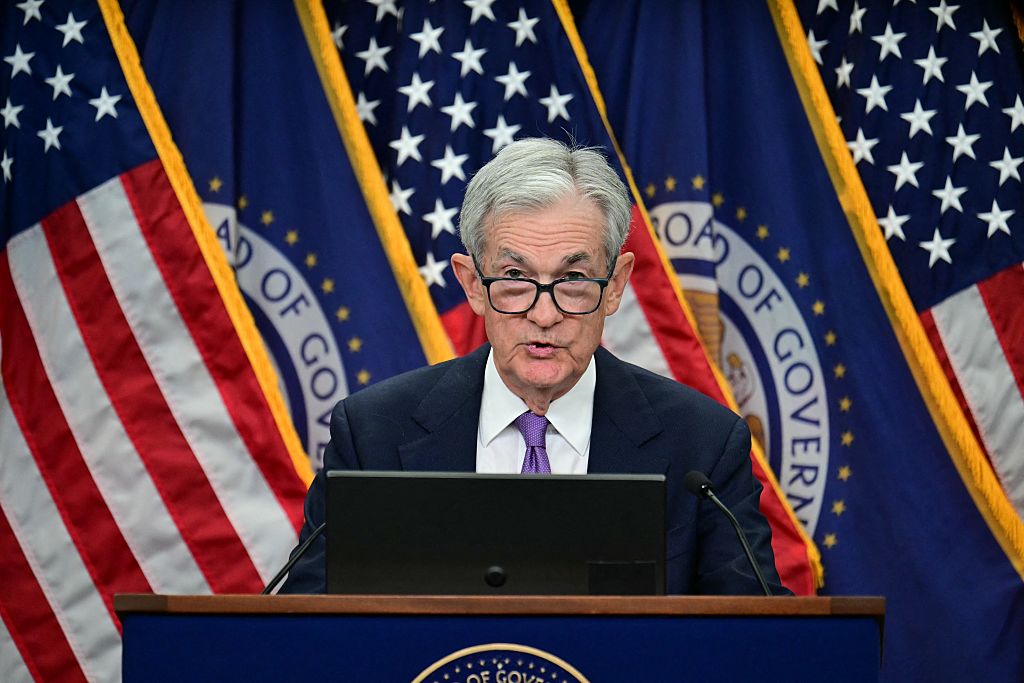Income Investors, Get a Boost From a Floating-Rate Fund
In the first nine months of 2016, the average bank loan mutual fund earned 7.1%, as the loan market benefited from signs that things are improving for U.S. consumers.


This may be a good time to move some money from cash and short-term bonds into floating-rate bank loans. By doing so, you may well boost your income and hedge against potential losses in your bond portfolio should interest rates climb in the coming year.
After returning essentially nothing over 2014 and 2015, floating-rate bank loans are having a banner 2016. In the first nine months of the year, a Standard & Poor’s index of the 100 largest floating-rate bank loans gained 8.5%, and the average bank loan mutual fund returned 7.1%. Current yields for bank loan mutual funds range from 3% to 5%.
Floating-rate loans are typically made to borrowers with low credit ratings. Although the loans are called floating-rate, the interest rate that borrowers pay banks doesn’t adjust daily. Rather, rates typically change every 90 days, but not until market rates exceed a certain floor. So it’s possible that the next Federal Reserve rate hike, which many analysts expect to come in December, may not result in higher rates for borrowers with floating-rate loans.
From just $107.88 $24.99 for Kiplinger Personal Finance
Become a smarter, better informed investor. Subscribe from just $107.88 $24.99, plus get up to 4 Special Issues

Sign up for Kiplinger’s Free Newsletters
Profit and prosper with the best of expert advice on investing, taxes, retirement, personal finance and more - straight to your e-mail.
Profit and prosper with the best of expert advice - straight to your e-mail.
Whether or not borrowing charges adjust upward soon, the bank loan market is benefiting from signs that things are improving for U.S. consumers. That matters because many floating-rate loans are made to retailers, casinos, cruise lines, hotel chains and other businesses whose fortunes depend on Americans spending freely. And because borrowers usually have subpar balance sheets, bank loans tend to perform poorly during periods of economic stress. For example, in 2008, in the depths of the financial crisis, the average bank loan mutual fund tumbled by nearly 30%.
There are few no-load bank loan mutual funds. My longtime favorite is Fidelity Floating Rate High Income Fund (symbol FFRHX, yield 4.1%). It is the oldest and largest no-load bank loan fund and charges below-average annual fees of 0.70%. The fund has been a reliable place to keep money since 2008 (a 16.5% loss that year put it in the top 1% of its category). Fidelity Floating Rate lost 1.2% in 2015 and gained 7.9% in 2016 through September 30. The only other no-load fund I’d consider is T. Rowe Price Floating Rate Fund (PRFRX, 4.0%). The fund, which charges 0.82% for expenses, gained 1.2% last year and 6.0% in the first nine months of 2016.
For fans of exchange-traded funds, the most seasoned choice is PowerShares Senior Loan Portfolio (BKLN, price $23, 4.6%). The fund, a member of the Kiplinger ETF 20, lost 3.1% last year and returned 7.4% in the first nine months of 2016. Its expense ratio is 0.65%.
Then there are the 37 closed-end funds that specialize in floating-rate loans. But closed-ends, which, like ETFs, trade on exchanges, are much more complex than their cousins. Share prices of ETFs tend to closely track the value of their underlying assets, but prices of closed-end funds can vary widely from their net asset value (NAV) per share. Moreover, all of the closed-end bank loan funds borrow money—up to 35% of their assets—to boost payouts. The use of leverage adds too much price risk for me to call these closed-ends a substitute for cash. That said, most are selling for wide discounts to their NAVs. For instance, Voya Prime Rate Trust (PPR, $5, 6.0%), the oldest bank loan closed-end fund, traded at an 8% discount to its NAV on September 30.
Putting aside the structure of the funds, in the end they are more alike than different. The same names crop up on lists of holdings whether you’re looking at a fund sponsored by Fidelity, T. Rowe Price, BlackRock or Nuveen. Figure on lending your money (indirectly) to Albertsons supermarkets, Caesars casinos, Hilton hotels and a handful of technology companies. The important task is to choose a fund with hundreds of positions, in case any of them default. Fidelity Floating Rate and the PowerShares ETF both easily qualify.
Profit and prosper with the best of Kiplinger's advice on investing, taxes, retirement, personal finance and much more. Delivered daily. Enter your email in the box and click Sign Me Up.

Kosnett is the editor of Kiplinger Investing for Income and writes the "Cash in Hand" column for Kiplinger Personal Finance. He is an income-investing expert who covers bonds, real estate investment trusts, oil and gas income deals, dividend stocks and anything else that pays interest and dividends. He joined Kiplinger in 1981 after six years in newspapers, including the Baltimore Sun. He is a 1976 journalism graduate from the Medill School at Northwestern University and completed an executive program at the Carnegie-Mellon University business school in 1978.
-
 Stocks Struggle Ahead of November Jobs Report: Stock Market Today
Stocks Struggle Ahead of November Jobs Report: Stock Market TodayOracle and Broadcom continued to fall, while market participants looked ahead to Tuesday's jobs report.
-
 7 Dr. Seuss Quotes Retirees Should Live By
7 Dr. Seuss Quotes Retirees Should Live ByYou're off to great places! Why Dr. Seuss is the retirement guru you didn't know you needed.
-
 Fed's Rate Cuts Could Have Impacts You Might Not Anticipate
Fed's Rate Cuts Could Have Impacts You Might Not AnticipateUnderstanding how lower interest rates could impact your wallet can help you determine the right financial moves to make.
-
 December Fed Meeting: Updates and Commentary
December Fed Meeting: Updates and CommentaryThe December Fed meeting is one of the last key economic events of 2025, with Wall Street closely watching what Chair Powell & Co. will do about interest rates.
-
 What Fed Rate Cuts Mean For Fixed-Income Investors
What Fed Rate Cuts Mean For Fixed-Income InvestorsThe Fed's rate-cutting campaign has the fixed-income market set for an encore of Q4 2024.
-
 The Delayed September Jobs Report Is Out. Here's What It Means for the Fed
The Delayed September Jobs Report Is Out. Here's What It Means for the FedThe September jobs report came in much higher than expected, lowering expectations for a December rate cut.
-
 October Fed Meeting: Updates and Commentary
October Fed Meeting: Updates and CommentaryThe October Fed meeting is a key economic event, with Wall Street turned into what Fed Chair Powell & Co. did about interest rates.
-
 The Delayed September CPI Report is Out. Here's What it Signals for the Fed.
The Delayed September CPI Report is Out. Here's What it Signals for the Fed.The September CPI report showed that inflation remains tame – and all but confirms another rate cut from the Fed.
-
 Banks Are Sounding the Alarm About Stablecoins
Banks Are Sounding the Alarm About StablecoinsThe Kiplinger Letter The banking industry says stablecoins could have a negative impact on lending.
-
 Government Shutdown to Delay Data, Including Key Jobs Report
Government Shutdown to Delay Data, Including Key Jobs ReportWhile government shutdowns typically don't impact stock returns, they can delay the release of key economic data – including the monthly jobs report.
-
 The Most Tax-Friendly States for Investing in 2025 (Hint: There Are Two)
The Most Tax-Friendly States for Investing in 2025 (Hint: There Are Two)State Taxes Living in one of these places could lower your 2025 investment taxes — especially if you invest in real estate.